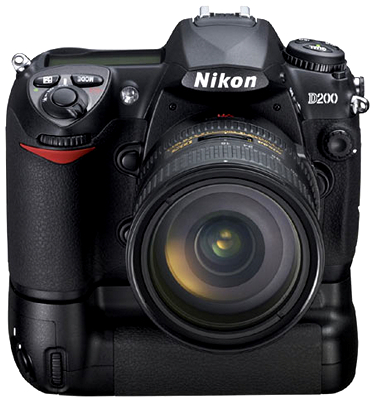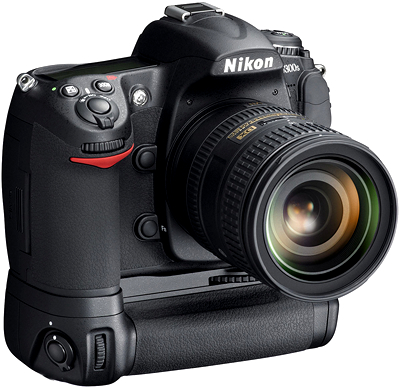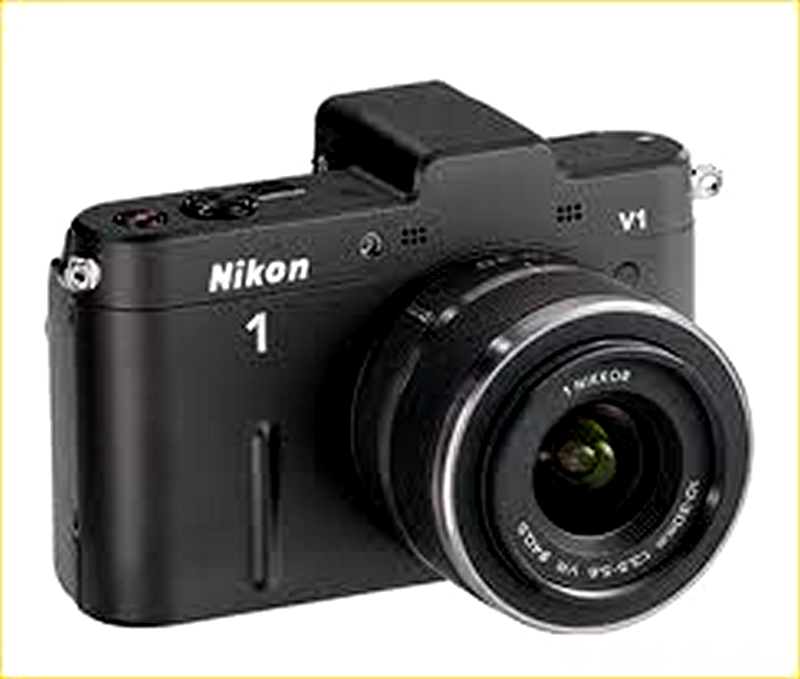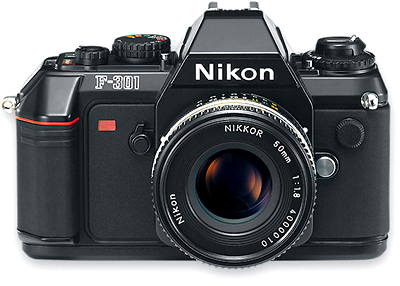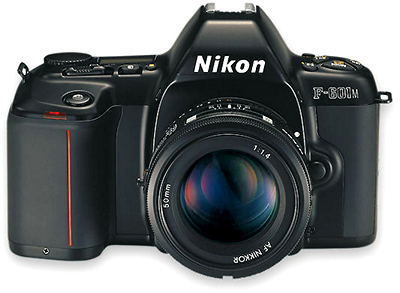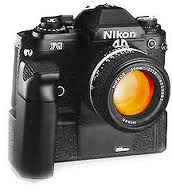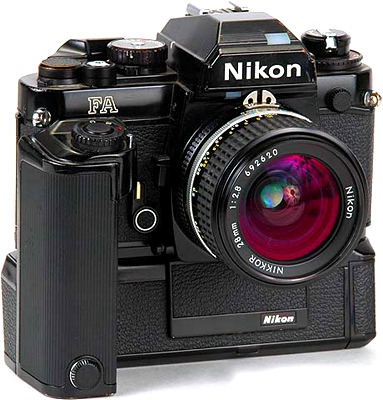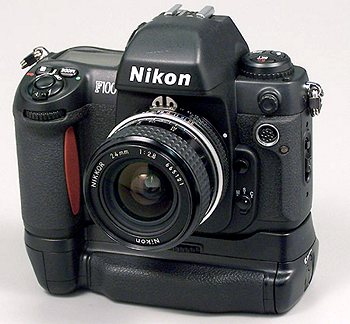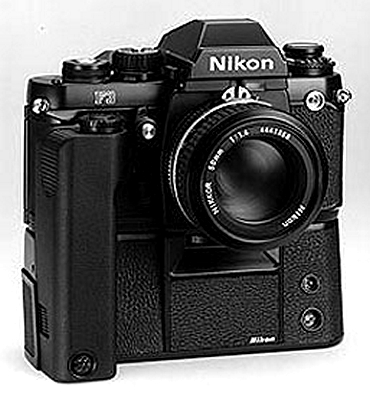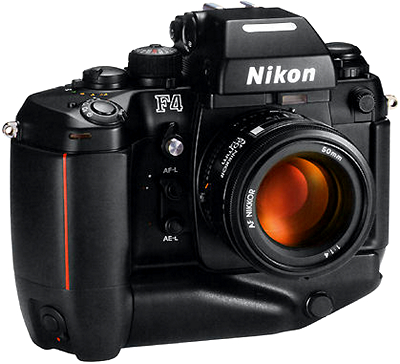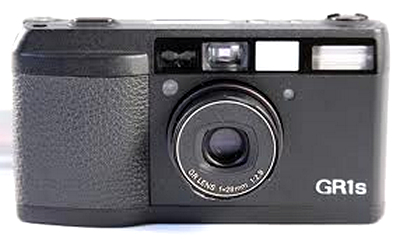Back to Equipment Reviews, Lens Reviews or Accessory Reviews
|
1 = Poor, not fit for purpose, definitely to be avoided 2 = Generally disappointing but useable, best avoided 3 = Good, solid performer but not 'great', think twice 4 = Excellent with some minor flaws or caveats, recommended 5 = Fabulous, recommended without hesitation |
CAMERA REVIEWS
A variety of film and digital cameras which I have owned and used........
|
Film Cameras
|
Digital Cameras
|
| Camera | Still Owned? | Rating | Comments |
|---|---|---|---|
|
Nikon D200 + MB-D200 (TOP)
|
Yes | 3.5 |
My first digital camera and I have to say that the images it produces are very good (despite 'only' being around 10MP). The exposure system is accurate, the drive reasonably fast and the AF is responsive. Battery life too is good and I typically get high hundreds of frames per battery even with AF and often VR and maybe a little use of the built-in flash. What I don't like are; Overall a very capable and competent semi-pro camera. Unless I am trying to track a bird in flight where I need the best focusing I have and the fastest frame rate I give little thought as to whether I pick up the D200 or the D300, both are very good (but the D300 is noticeably better). |
|
Nikon D300 + MB-D10 (TOP)
|
Yes | 4.5 |
If you have read my thought on the D200 and you are familiar with the D300 you will realise that most of my gripes were addressed by Nikon when the D300 was launched. The focusing is better and covers more of the frame, it faster (and now fast enough), the screen is light years better, the images are even a little better, it takes the EN-El4a, etc. My dislikes for this camera are really more a list of what I would like to see improved to make an even better camera for the photography that I do. These would be; You may have noticed that I have made no criticism of the pixel count, which at approx 12MP is quite low by modern standards (the new D3200 entry level camera is at 24MP!). This is because the images I get from both the D200 (10MP) and the D300 at 200 ISO are stunning and quite capable of making superb 20" prints. I don't make bigger prints than this, although I am sure that I could push the images further, so why do I need more than 12MP? It would give more flexibility to crop but that is not so important to me. The megapixel 'arms race' is a marketing ploy and an 'ego stroker' IMHO. 12MP does me fine and I will only update to a higher pixel count if I have to do so to get some other feature or performance gain such as better ISO performance. Indeed, if the D400 is not a significant improvement in this respect I may wait until the D4 (now launched) is in good supply and then buy a D3s which should be lowered in price as the pros who need to be at the cutting edge and the nirvana seeking amateurs upgrade. The only down sides to this approach would be the loss of the crop factor at the telephoto end (although it would sometimes be nice to be able to switch between the two sensor sizes to increase lens coverage) and the loss of the use of my wide angle lenses (both my 17-55mm and 12-24mm are obviously DX although the 12-24mm will allegedly cover a FX sensor from 18-24mm). But I could live with these for a significant ISO performance improvement provided I still have my trusty D300. In conclusion the D300 is a superb camera and one I hope to be using for many more years. Certainly a significant and worthy successor to the D200 (and D2x). The shutter count on my D300 is currently (April 2012) at around 85,000+ and long may it continue, a superb camera only failing to achieve a 5 because the high ISO performance is not great. Indeed I bought a second D300 at the start of 2012 for my trip to Tanzania and I never regretted that as it was a huge benefit to have a D300 on both the 200-400mm and 70-200 simultaneously, leaving the D200 with the 17-55mm for wider shots. I specifically did not buy the D300s as I have no use for the video feature and wanted to keep the controls identical. |
|
Nikon V1 (TOP)
|
Yes | Comming Soon................ | |
|
Nikon F301 (TOP)
|
No | 3.5 | My first Nikon. It was well built, reliable, accurate and easy to use. The drive was a little slow at times but for most uses it served me very well. The battery capacity was not great with the standard AAA type but I upgraded mine to AA batteries which were a lot better. I often wondered why Nikon saddled such an excellent camera with such a poor battery choice. Another I was sorry to see go. |
|
Nikon F601m (TOP)
|
Yes | 3 | A surprisingly nice little camera, works well and produces nice results. This was one of the first Nikons with on camera flash compensation which was simple and effective, and the main thing that drew me to the camera. The viewfinder too was nice and bright being of a later design and screen technology. The body was a little too small for my liking so I made a wooden hand grip for it which attached to the tripod socket and meant that the hand hold was then big enough to get a comfortable grip with all four finger rather than my little finger not having anywhere to rest. This much improved the handling and stability of the camera. The only other down side, especially when the camera was relatively new out, was the use of a lithium battery with no option to substitute it for the much more common and affordable AA type. The cost of these lithium batteries did decrease however over the years but it was still a little restrictive should you suddenly run out. I still own the camera. |
|
Nikon FG / MD-14 / MD-E (TOP) |
No | 3.5 | The FG was my first second camera if that makes sense. I bought it to supplement my F301 and combine with the MD-14 I actually preferred it. It was not in the same league as later cameras that I owned such as the FAs (it was not as precise or rugged) but I really liked using it and it was the best that I could afford at the time. Soon after buying the camera I added the MD-E which, whilst well made was not great, being too small, slow and its reliance on AAA batteries was very limiting. Upgrading the MD-E to the MD-14 really moved the handling of the camera to a new level. The F301 was replaced by my first FA and the second FA eventually replaced the FG. |
|
Nikon FA / MD-15 (TOP)
|
Yes |
4.5 |
Another fine Nikon camera and motor drive combination. The camera was also compatible with the MD-12 originally designed for the FM/FE camera ranges but I much preferred the dedicated MD-15 as in this case the motordrive supplies power for the functioning of the camera rather than rely on the tiny button cell in the camera body. Thus if you had a good supply of AA batteries you were never going to have power problems. This was the first Nikon to have matrix metering (then called multi-pattern metering) which was based on a 5 zone metering system with computational algorithms behind it. The system worked very well and has evolved over the years into the modern matrix metering systems. It was also the first Nikon to have all four basic operational modes (manual, aperture priority, shutter priority and program) which seems quite amazing now. As with all of my Nikons, even today, I only ever used AP and M however.
This was the top semi-pro body in Nikon's range when launched and was very expensive (it would be a good few years later that I bought mine, I had both a black and a chrome example, each was second-hand) which made one feature of the camera surprising and the only negative I had with it. The pentaprism was plastic, not metal. This did not affect the functioning of the camera but was an unnecessary shortcut on an otherwise brilliant camera. Indeed, one or both of my FAs formed the core of my system for a good few years, both were fitted with a MD-15 and a type 'B' focusing screen. I still own one of them (the other was lost / stolen in Kenya back in the late 90's) and will never sell it. |
|
Nikon F100 / MB-15 (TOP)
|
No
|
4.5 | A solid, robust and accurate film camera which I found great pleasure in using. By today's standards the number of AF points etc. were a little limiting but if you can't create great images with this camera blaming your tools does not cut it in my opinion. Personally I only ever used it with the optional MB-15, I like a large heavy camera most of the time. A super camera which I was sorry to see go. |
|
Nikon F3 / MD-4 (TOP)
|
Yes | 4.5 |
This was always my dream camera, even though I knew deep down that it would not be a match for the F4s for wildlife photography there was just something alluring about the simple basic ruggedness of the F3. So in 2006 I spotted one second-hand in a local camera shop at an almost giveaway price and bought it. I quickly tracked down a nice but sensibly priced MD-4 and I was the proud owner of my dream camera (the HP prism would have been icing on the cake but I never had an issue with the standard prism). The prices were falling as people moved to digital and sold their film gear but I felt that move would be a long way off for me and so was happy to be the beneficiary of such a move in the market. Little did I know that just a few months later I too would see the light and move over to digital. The F3 has therefore seen little use and I decided not to take it to Kenya that year (I had only just bought it and so did not have the experience with it that I would have liked for such a trip) on what was to be my final trip with film, favouring the F4s for the 400mm f/3.5 IFED due to the brighter viewfinder (this is the only reason the F3 does not score a 5) and more familiarity and the F100 for the 70-180mm micro and 300mm f/4 AFS due to the AF option it gave.
The times I did use the F3 it lived up to my every expectation but these were sadly very few. Do I regret buying it? No way, I still have it in a display cabinet and live with the pointless hope that one day someone will bring out a 'retro' digital back for it. 10-12MP FX sensor with good ISO performance to 800 or 1600 and I would buy one tomorrow. I have even thought about shooting a little film just so I can use it again...... A true legend. |
|
Nikon F4s (TOP)
|
No | 5 |
Simply the best manual focus film camera ever IMHO. Ok, I know that technically this was an AF camera but I bought mine second hand (as I did most of my film gear and still do when possible and sensible to do so) long before I seriously considered AF to be anything more than a marketing gimmick. Indeed I only bought my first AF lens (my 70-180mm micro which I still have) because there was no manual focus only equivalent. I therefore used this as a manual focus camera, and even when I bought my 300mm f/4 AFS (bought for the optics and close focus more than AF capability) and decided to dabble a little with AF I tended to use the F100 for AF. That is not to say that the AF on this camera was unusable, far from it, it is just that I never really thought of it as an AF camera. By today's standards the AF was rather primative but pretty good in its day, though perhaps never cutting edge. It was big, solid and heavy, but also fast to handle, comfortable and unerringly reliable in both function and output. It was also fully compatible with all of my kit, old and new, and everything just simply worked. It even ran at up to 5.7 fps which was lightning fast for a standard film camera. It works like a Swiss quartz watch and balances well with every lens that I have tried on it. I particularly liked to combine it with the 400mm f/3.5 IFED, the bright viewfinder (I used the type 'E' focussing screen) made focusing easy and the precision mechanism minimised vibrations and therefore image blur. A true Nikon legend. I would still own it to this day had it not experiences a fatal fall. I have only dropped a camera twice, both times it was this one and the second occasion put it beyond economical repair. A sad day indeed. |
|
Ricoh GR1s (TOP)
|
No | 4 | I bought this to carry around when I travelled with work or on a personal trip when I did not have my main camera with me. The GR1s had received a lot of good write-ups, was small, fast (28mm f/2.8 lens) and easy to use with the option of aperture priority or programme, both with exposure compensation. It seemed ideal for what I wanted and indeed it fitted the bill well. I used it only with slide film which is somewhat more demanding than the print variety but the exposes were usually excellent, even in tricky light. The lens performed well too but I did find that it tended to vignette at times, presumably when working at, or near to full aperture. It was very well built and looked like new still when I sold it despite having travelled quite a bit with me. Probably the best non-Nikon camera I have owned. |
Back to Equipment Reviews

